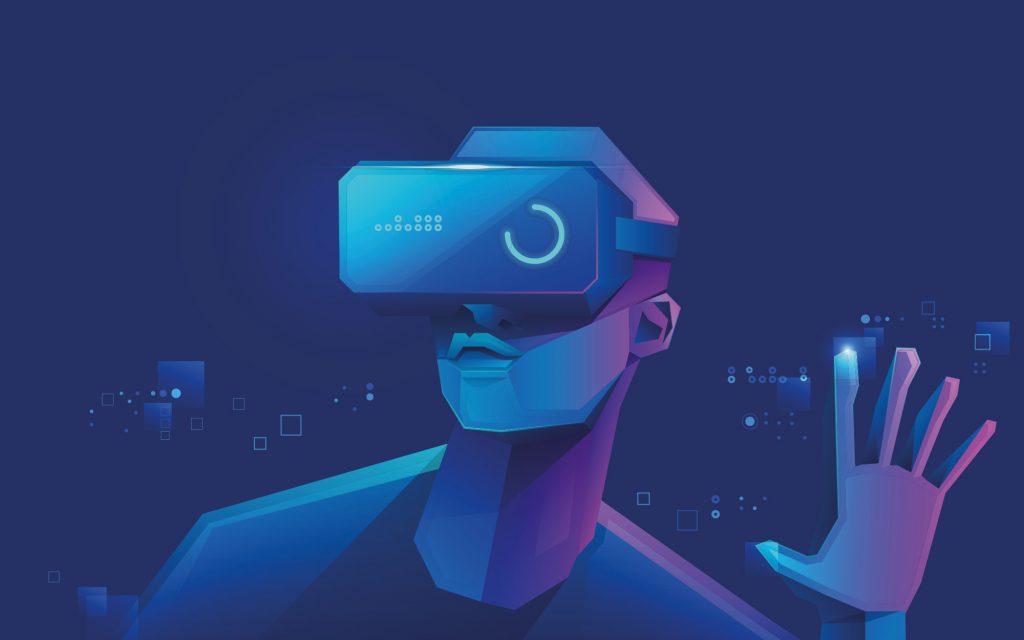Web3
The next iteration of internet
Web 1 (1990-2004)
The first era of the modern internet was about open protocols that were decentralized and community-governed. Users and builders benefits from the value created.
Web 2 (2004-2020)
The second era of the internet favored centralized services. Most of the value accrued to a handful of large tech companies which own the data. The world’s most valuable resource given for free by users.
Web 3
We are now beginning the third era of the internet which combines the decentralized, community-governed spirit of the first era with the advanced functionality of the internet we all know. This will unlock a new wave of creativity and entrepreneurship.
READ, WRITE AND OWN
Web3
The internet of ownership

Web 3 uses Blockchain technology, cryptocurrencies and NFT to give the power back to the user in form of ownership.
CONSUMER-OWNED INTERNET
Users and builders have permissionless access and the ability to own and control their Identity, Data, Assets, Content…
…the ability to own a piece of the internet.
DEFI
The first succesful user case
Decentralized Finance is the first massive adoption use case in Web 3.
The success and fast growth is mainly based in two powerful values:
COMPOSABILITY & INTEROPERABILITY
With a smart contract, a piece of code could automatically issue a loan based on the collateral provided by the individual.
Smart contracts can also be programmed to interact with each other, like building blocks. Composability allows to take existing programs and adapt or build on top of them, it unlocks completely new use cases that don’t exist in our world.
Ethereum smart contract developers enabled composability over time by converging on community standards that describe how certain types of contracts should behave. For example, the ERC-20.
With these token standards in place, smart contracts can act as building blocks that are able to be assembled into larger complex systems. Just like a software library, smart contracts for different protocols and applications can easily plug into each other like Lego pieces, known as Money Legos.
It enables Interoperable assets across many different protocols and applications.
Gaming
Massive adoption through gaming
The Gaming Industry has been growing 10% annually for 30 years. $134 Bn in annual revenue. $54 Bn spent on Virtual goods in 2020 (x2 Music). Video games are the antecedent of Virtual Worlds and a perfect use case for NFT.
Now Gaming is one of the fastest growing verticals in crypto. Powered by a permissionless, global financial system. Crypto makes gaming economies more accessible, allowing the tail-end of players to participate in “play-to-earn” economics.
The progress made in DeFi has been attributed to the introduction of standardized, interoperable assets, allowing developers to incorporate tokenized assets from other protocols and allowing smart contracts to operate as building blocks composing larger, more complex systems.
Similarly, standardizing a framework for blockchain gaming assets unlocks interoperability and composability among all games designed under this framework, allowing developers to easily incorporate in-game assets from other games as well as build upon systems and mechanisms from other developers and protocols.
Gaming assets and currencies traded natively across different games, protocols and platforms.
FROM MONEY LEGOS TO GAMING LEGOS
Gaming
Massive adoption through gaming
Gaming has been historically the perfect playground for adopting new technologies before becoming mainstream. What is coming to Blockchain Gaming next will show us the path for future trends and help us to identify where the biggest opportunity is. The foundation for a consumer-owned internet.
ON-CHAIN GAMES
New Blockchain Scalability solutions unlock on-chain multiplayer online gaming at scale.
CUSTOMIZABILITY
User Generated Content is a huge driver of revenue for games. Gaming studios can simply develop the underlying infrastructure (which can be as simple as smart contracts dictating core gameplay mechanisms) and outsource hosting and further development to the community.
IDENTITY & SOCIAL LAYER
Bringing the system on-chain allows players to build reputations under a pseudonym, while at the same time being able to port over and utilize their identity and social graph in games outside of a specific developer or publisher ecosystem. This also has strong implications for reputation-based services.
GOVERNANCE & COMMUNITY
Decentralized governance allows players to participate and have a voice in the development of games, it also opens up the possibility for incorporating community ownership as a core gameplay mechanism.
INTEROPERABILITY
Reducing friction when connecting identity and reputation across games. The need to demonstrate social proof and credibility is only becoming a more prevalent factor in shaping the future of our digital economy. On-chain data gives users full ownership over their in-game assets, the ability to aggregate and transfer their assets across various games
STANDARDIZATION & SECURITY
Tools and SDKs (Software Development Kits)
THE NEXT $1 TRILLION OPPORTUNITY
Gaming social and metaverse
The next $ 1 trillion opportunity
Gaming social and metaverse
The next $ 1 trillion opportunity

We see the opportunity in the combination of these fast-growing interrelated sectors that share the same fundamentals and leverage in Decentralized Finance.
The onboarding of the next billion users to Web3 will be through Gaming, Social and Metaverse.
GAMING, SOCIAL & METAVERSE
OUT INVESTMENT TESIS
Our investment thesis
The foundation for a consumer-owned internet
Fundamental values
Ownership
Interoperability
Composability
Scalability
Massive adoption verticals
DEFI
Gaming
Social
Metaverse
Blockchain technology
Layer2
Scaling solutions & Bridges
Layer 3
Protocols & Category Primitives
Layer 4
Access & Usecase D’Apps
Our investment thesis
Blockchain technology
LAYER 4
ACCESS & USE CASE D’APPS
L4 is the top-most layer of the stack and usually serves as the entry point in a user’s Web3 journey. To that end, many Layer 4s try to compete on the best UX and customer support rather than technological capabilities.
LAYER 3
PROTOCOLS & CATEGORY PRIMITIVES
L3 consists of decentralized applications (dApps) that are highly reliable at doing a specific task. In some cases, these are stand-alone apps that users can interact with directly (e.g. Uniswap). But for the most part, Layer 3s function as components that developers can choose to incorporate into their consumer-facing apps.
LAYER 2
SCALING SOLUTIONS & BRIDGES
L2 refers to add-on technologies that primarily make Layer 1s more scalable. Bitcoin, for instance, has the Lightning Network for faster and cheaper transactions. Ethereum, on the other hand, has a range of scaling solutions like Polygon, Arbitrum and Optimism.
LAYER 1
BLOCKCHAIN, BITCOIN, ETHEREUM
L1s refer to blockchain platforms like Bitcoin and Ethereum, which maintain a distributed ledger while allowing applications and tokens to be built on top of them..
LAYER 0
NETWORKS
L0 consists of platform-agnostic protocols and virtual machines that provide the necessary capabilities for building blockchain networks. Examples include Inter-Blockchain Communication Protocol (IBC), which allows blockchains to talk to each other.